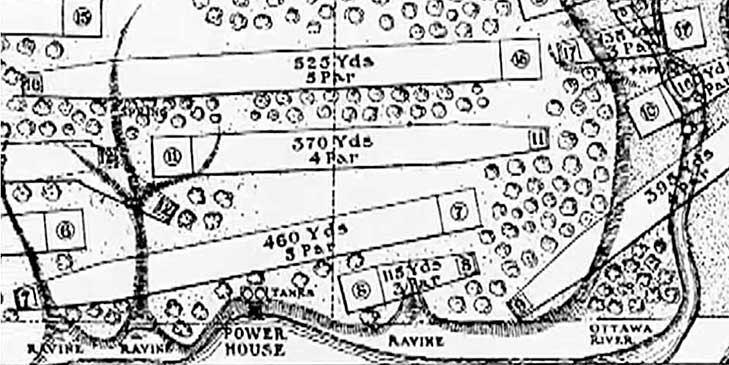Architect Drew Rogers will lead a comprehensive renovation of the course at the Sylvania Country Club in Toledo, Ohio.
Designed by Willie Park Jr, the Sylvania course opened in 1916, and Rogers commented: “We’re nearly 100 years into the evolution of each of these golf courses, and any such layout will undergo marked change over such a long period of play.”
Rogers will also be working concurrently on a similar design reinstatement project at the Kenosha Country Club in Wisconsin, which was originally designed by Donald Ross.
“There’s a spectrum of change that can take place on courses like these, from the ‘Golden Age’,” he said. “At one end, there are courses where the greens, tees and bunkering have been actively modified, moved or replaced with ever-more-modern feature components. At the other end, you have clubs like Kenosha and Sylvania, where nearly all the original features are essentially intact, still recognisable, but have fallen into some level of disuse.”
Twice Open champion, Park’s designs include the original course at Olympia Fields in Chicago, the No. 2 course at Gullane in his native Scotland, and the Old course at Sunningdale, UK.
“Park doesn’t get the attention of Ross, but his work was brilliant,” said Rogers. “Park’s routing and use of the terrain at Sylvania was amazingly playful. But his design is just part of what makes Sylvania Country Club such a unique place.”
Rogers’ vision for Sylvania includes restoring the course’s greens to their original perimeters. Another area of focus will be the bunkers, which have been modified at various times and by various parties since the course’s opening. Rogers is planning a modest bunker reduction while providing all remaining bunkers with a uniform, rolled-grass-face, flattish-bottomed look that is more in keeping with the manageable style of Park’s bunkering.

“I’m all for replacing dull, shallow saucers with more dynamic bunkering that is fitted into the landforms, and there are many examples at Sylvania where bunkers have become detached from greens and fairways,” Rogers said. “We’ll restore and reattach those bunkers and refine their purposeful positions. However, sometimes modern architects need to recognise the purity and simplicity of what the original architect had clearly intended – and simply get out of the way. The 12th green at Sylvania sits atop a wonderful landform that was identified and partly built up by Willie Park. Two greenside bunkers were added later, right and left. We plan to remove them both. The ravine and mounding at left are too special to be cluttered by a detached, flat, featureless bunker – by any bunker!”
Another area of focus will be on Hole 12, a dogleg par four that plays over a landform where the fairway turns.
“By selectively removing a few trees in the right rough,we’re opening up a fairway corridor that, when we’re done, will drape itself over the full breadth of this hillock,” he explained. “By establishing some new forward teeing grounds, negotiating this hole will be easier and more enjoyable for shorter hitters. By removing bunkers and a few more trees at greenside, we’ll further peel back the layers – revealing the details of an exquisitely natural hole that's been there all along.”
“If your course is so demonstrably classic, that fact can and should be enhanced through some level of beneficial recovery and leveraged to better attract a certain type of member,” Rogers added. “Reviving these grand designs can and should add value, if done properly.”